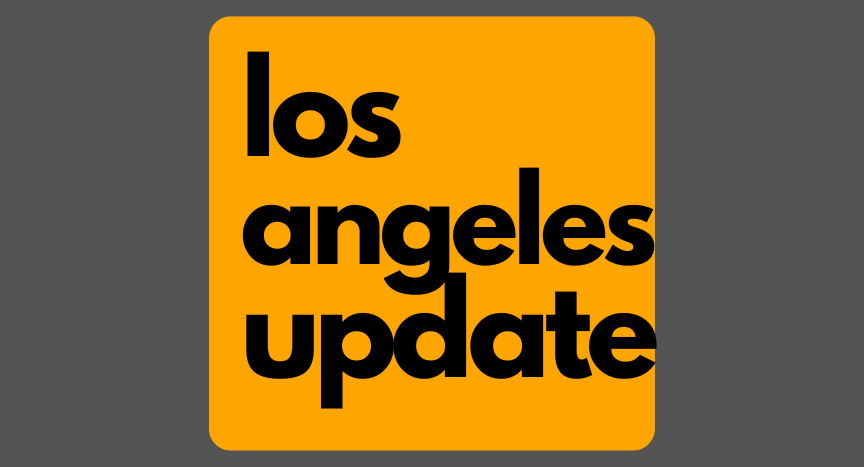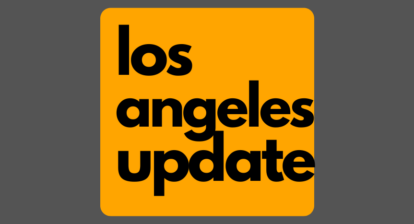At least 25 individuals have lost their lives due to the fires in Los Angeles as two significant blazes continue to rage throughout the expansive city.
Firefighters made headway over the weekend in controlling the Palisades and Eaton fires, but caution that the resurgence of strong winds – predicted until Wednesday – could lead to further spread or ignite new fires.
These fires rank among the most devastating in Los Angeles’ history when assessing the number of destroyed buildings. According to US President Joe Biden, the rebuilding efforts will require “tens of billions” of dollars.
What’s the latest?
Officials describe an area north-west of the city center as “particularly hazardous”.
A red flag warning, indicating extreme fire danger, is active until 18:00 (02:00 GMT) on Wednesday, with the most intense Santa Ana winds anticipated on Tuesday.
The largest fire, located in the Palisades region, has scorched over 23,000 acres and is currently only approximately 14% contained despite the efforts of numerous firefighters.
The fire is advancing eastward, posing a threat to the affluent Brentwood neighborhood, home to the renowned Getty Center, which has evacuated its staff.
In contrast, the Eaton fire has proven more lethal than the Palisades fire, accounting for 16 of the fatalities.
The extent of destruction is staggering, with over 12,000 structures – including homes, outbuildings, sheds, mobile homes, and vehicles – reduced to ashes. Notable figures like Mel Gibson and Paris Hilton are among those who have lost their residences.
Tens of thousands of households are also experiencing power outages.
These wildfires could become the most expensive in US history, with estimates of damages reaching up to $150 billion, as indicated by initial assessments from AccuWeather.
Where are the fires?
According to California fire officials, there are three active fires in the broader region, along with a smaller fire that is nearing containment:
- Palisades: The first fire that ignited a week ago and the largest in the area. It has scorched over 23,000 acres as of Tuesday, including the affluent Pacific Palisades neighborhood, and is only 14% contained
- Eaton: Impacting the northern sectors of LA, consuming areas like Altadena. This fire is the second largest in the vicinity, burning over 14,000 acres and is now 33% contained
- Hurst: Situated just north of San Fernando, it began on Tuesday. It has expanded to 799 acres but is nearly fully contained
- Auto: Ignited on Monday. It has reportedly been halted before moving further after extending over 56 acres, according to officials in Ventura County
The previously burning Kenneth, Archer, Sunset, Lidia, Woodley, and Olivas fires have been contained.
What does it mean for a fire to be contained?
Containment refers to the measures taken by firefighters in managing the spread of flames. This is often presented as a percentage. For instance, if a fire is reported as 14% contained, it indicates that fire crews have established barriers surrounding 14% of the fire’s perimeter.
Natural barriers may include roads, rivers, and bodies of water. Firefighters can also construct barriers using tools such as bulldozers, hoses, and shovels to clear vegetation down to bare soil, eliminating anything for the fire to burn.
While a fire being 100% contained does not imply it has been extinguished, it signifies that the flames have been entirely surrounded and the spread has been effectively halted.
What caused the fires?
Investigators are actively examining the potential causes.
Lightning, which is the most frequent cause of fires in the US, has been ruled out as the instigator of both the Palisades and Eaton fires.
There have been no official reports indicating that arson or utility lines – the next most significant sources of ignition – were responsible for any of the fires.
However, in connection with the Eaton fire, lawsuits have been filed against the electrical provider Southern California Edison Company (SCE), asserting that there is evidence the fire – one of the largest – was started due to the negligence of the company’s overhead power lines.
SCE has expressed its intention to “review the complaint upon receipt,” emphasizing that “the cause of the fire is still under investigation.”
A spokesperson added that the company “remains dedicated” to aiding communities impacted by the fires.
On Friday, SCE noted that investigators were looking into whether its infrastructure contributed to the ignition of the separate Hurst fire.
California’s exceptionally wet years of 2022-23 resulted in substantial vegetation growth, which subsequently dried out during last year’s drought, creating an abundance of combustible material.
Conditions have been ripe for wildfires due to a combination of an unusually dry period – downtown LA has received just 0.16 inches (0.4cm) of rain since October – and powerful offshore winds known as the Santa Ana winds.
Was LA prepared for the fires?
A political dispute regarding the city’s preparedness has emerged following reports that some fire crews had dry hoses.
California Governor Gavin Newsom has demanded an independent inquiry into the loss of water pressure at hydrants and the reasons behind the Santa Ynez Reservoir being closed for maintenance and empty when the fire erupted.
He stated, “The loss of hydrant supplies likely hindered efforts to safeguard certain homes and evacuation routes.”
LA Mayor Karen Bass, who was on a pre-planned trip to Ghana when the fires started, is facing significant scrutiny regarding the region’s readiness and the water supply issues. On Saturday, she sidestepped inquiries about her management of the crisis.
Prior to the outbreak of the fires, the LA fire chief had cautioned in a memo that budget restrictions were obstructing the department’s emergency response capabilities. However, another official, the LA County fire chief, contested that his team was unprepared.
What role has climate change played?
While strong winds and minimal rainfall are fueling the fires, experts assert that climate change is modifying the underlying conditions and heightening the risk of such wildfires.
The western United States, including California, endured a prolonged drought lasting decades that concluded just two years ago, rendering the area susceptible.
Rapid “whiplash” transitions between dry and wet phases in recent years have resulted in an enormous amount of tinder-dry foliage ready to ignite.
Research from the US government unmistakably connects climate change with more frequent and severe wildfires throughout the western US.
According to the National Oceanic and Atmospheric Administration, “Climate change, which includes rising temperatures, prolonged drought, and a parched atmosphere, has been a significant factor in increasing the likelihood and scope of wildfires in the western United States.”
Typically, the fire season in Southern California is considered to run from May to October – but Governor Newsom has noted previously that wildfires are now a year-round concern. “There is no fire season,” he remarked. “It’s a fire year.”
How long will the fires last?
It remains uncertain when the fires in Los Angeles will be fully extinguished. The city is preparing for ongoing fires and potential spread amid the current wind advisories.
The Santa Ana winds that intensified the flames are expected to grow stronger, with powerful gusts on Tuesday before a predicted decrease in intensity. New red flag warnings for hazardous windstorms are in effect.
The other factors that contributed to the fire – dry brush and absence of rainfall – also persist.


